Review: Pascal Coyon Chronometer Series 2 in Rose Gold Case
The leading independent French watchmaker excels in exceptional hand-finishing, traditional craftsmanship, precise timekeeping, and offers extensive customization options.
After an unforgettable Geneva Watch Days, I boarded a TGV Lyria train from Geneva to Paris Gare de Lyon, eagerly anticipating the next highlight of my trip.
After a day of museum visits and rest, I caught a train from the city center to Poissy in the suburbs, followed by an Uber ride to Villennes-sur-Seine. There, I arrived at the workshop of Theo Auffret, the rising young French independent watchmaker.
This was the meeting point arranged by Pascal Coyon, who was personally delivering my watch. He had driven all the way from his home in southwestern France, staying overnight in a hotel to make the trip. Pascal had asked Theo to act as our translator.
Theo was delayed due to an outside appointment, but Eve, another young watchmaker, greeted us warmly and offered a tour of the workshop. Afterward, we sat down, and Pascal handed me a beautifully crafted wooden watch box. I opened it gently, revealing the Pascal Coyon Chronometer Series 2 with a rose gold case.
Though I had seen many photos of Pascal’s watches, holding a brand-new piece in front of the creator himself was a magical moment. I examined the watch from every angle, — it was a true beauty, a work of art. Pascal encouraged me to try it on, eager to see how it fit. It was perfect, and I was over the moon.
Now, two weeks later, the honeymoon continues. I’m excited to finally share my experience with you in this review.
A Brief Biography of Pascal Coyon
Pascal Coyon hails from the Champagne region in eastern France and attended Lycée Edgar Faure in Morteau from 1980 to 1983, one of the world’s top watchmaking schools. Located near the Swiss border, the school sees about 80% of its graduates go on to work for Swiss watch companies.
Pascal, however, chose a different path, moving to the southwest of France, perhaps seeking more sunshine. He established his workshop in Bayonne, near the seaside tourist town of Biarritz. For 15 years, Pascal specialized in the repair and restoration of clocks and watches. Around 2000, he decided to craft watches under his own name, following traditional watchmaking methods. His goal was to create chronometers with hand-finishing at an affordable price.
His first limited production of 60 pieces was well-received and sold out quickly. However, it took Pascal several years to complete the orders. Afterward, he began working on Chronometer Series 2, unveiling a prototype around 2019.
Pascal handles all the movement finishing and assembly in his workshop. He uses a CNC machine for plates and bridges but occasionally relies on a subcontractor for CNC machining when his schedule is tight. For cases, dials, hairsprings, rubies, and straps, Pascal sources the best suppliers from Switzerland. In 2015, his daughter Barbara, who had been trained in watchmaking, joined him to help with the success of Chronometer Series 1.
Each timepiece from Pascal is custom-made, offering clients various options for materials, dials, and case designs. For collectors, working with Pascal on their watch’s design and customization is an intriguing and rewarding experience.
Pascal keeps a low profile, as he doesn’t have a website. However, he does maintain a presence on Instagram and Facebook, where he enjoys showcasing his recently completed watches. Based on his Instagram activity, his annual production is estimated at around 10 pieces. Six of his Chronometer Series 1 watches have been auctioned at Phillips, Sotheby’s, and Loupethis, fetching three to four times their original price. Despite this, the brand remains under the radar, truly a hidden gem.
The Options and Customization
Pascal offers clients a wide range of options when specifying the Chronometer Series 2. The choices can feel overwhelming at first. My suggestion for anyone interested in ordering is to get familiar with the Series 2 watches showcased on Pascal Coyon’s Instagram account. Find which designs and colors resonate with you.
Movement Color
The in-house Caliber 19 powering the Series 2 is available in three colors: 19C (pink), 19B (white), and 19H (Havana). According to Pascal, the Havana color is a blend of rose and yellow gold tones, and it's his personal favorite. These colors are achieved by electroplating. I decided to go with the more exotic Havana color.
Case and Buckle Material
The options for the case and buckle are stainless steel, rose gold, white gold, and platinum. The case and buckle are manufactured by Voutilainen & Cattin SA based on Pascal’s design. I opted for the rose gold case.
Dial Design and Materials
There are two dial designs: the sector dial and the new classic dial. The new classic dial evokes the early 20th-century Patek Philippe timepieces, which I adore, so I chose this design. The elegant sector dial also appealed to me, making it a tough decision.
Each dial design offers several modification possibilities. For instance, one client requested railroad track minute markers on the new classic dial (replacing the default dots), while another chose numerals from the new classic design for the sector dial. Some clients have even opted for Hindu-Arabic or Eastern-Arabic numerals.
A key decision is the dial color, which can be challenging to choose (too many choices). From Pascal’s Instagram, you can see a variety of colors selected by clients, including white, pink, champagne, ivory, dark blue, and salmon.
Taking inspiration from the Patek Philippe Calatrava 6119R with a rose gold case, I asked if we could use a similar shade. Pascal suggested either off-white or eggshell white to match the 6119R’s tone. For the surface treatment, he proposed either micro-powder finish, similar to the 6119R, or velvety-powdered, which emphasizes softness and luxury.
At this stage, it was hard to distinguish the subtle differences in CAD simulations, so Pascal had the dial maker produce two samples for me to choose from. I ultimately went with the off-white version, as it provided a slightly greater contrast with the rose gold case. However, I’m confident both versions would have looked stunning.
Clients can also opt for different dial materials, such as enamel and various stones, though these come with additional costs, but it's great to have such options.
Lastly, there’s the opportunity for dial customization. I requested a red 30 in the seconds sub-dial, as 2023 marks the 30th anniversary of a personal milestone for me. Normally, there's a red 12-hour or red 60-minute marker. Pascal liked the idea and happily agreed. He contracts Metalem SA, owned by Chopard, for dial manufacturing, the same company Philippe Dufour uses.
The Hands
There are many options, including leaf hands, Breguet hands, sword hands, classic marine hands, and new marine hands. I chose the classic marine hands, with the hour and minute hands in rose gold, and requested a blue sub-seconds hand.

Leather Strap
Pascal orders his leather straps from Les Artisans Selliers Sàrl, a high-end Swiss workshop founded by Sophie Dornier. I went with a brown alligator strap recommended by Pascal.
I couldn’t be happier with these choices after receiving the watch! Every detail looks perfect. It's so photogenic that I immediately captured many stunning wrist shots. I placed the order with Pascal in November 2021, and it was certainly worth the wait!
Caliber 19 Chronometry Performance
The Caliber 19 is Pascal’s second-generation movement, powering the Chronometer Series 2. It stands out for its superior chronometry performance and top-tier hand finishing. Let's first discuss its timing performance.
One key specification often used to differentiate independent watches from mainstream brands is the frequency or beat rate of the balance wheel. Mainstream brands typically opt for 28,800 vph, or 4Hz, which strikes a sensible balance between accuracy, power reserve, shock resistance, and cost.
Independent watchmakers, on the other hand, often favor lower beat rates of 2.5Hz or 3Hz. This allows for a larger balance wheel with slower oscillations, a clearer tick-tock sound, and a longer power reserve. The challenge is the increased effort required to ensure top-tier timing performance.
If you hold a Pascal Coyon watch to your ear, you'll notice a distinct, crisp tick-tock sound. The balance wheel is notably large, and its oscillation, along with the movement of the hairspring, is clearly visible. True to form, the Chronometer Series 2 operates at 18,000 vph or 2.5Hz. It’s a timepiece to be savored both visually and aurally.
Despite the lower beat rate, Pascal designed the watch to meet chronometer standards—a high-precision certification reserved for timepieces that pass rigorous accuracy tests. One of the oldest and most prestigious institutions performing such certification is the Besançon Astronomical Observatory in France. A certificate from Besançon is highly esteemed due to its strict 16-day testing regimen, which includes varying temperature conditions.
Top independent watchmakers like Kari Voutilainen, Laurent Ferrier, AkriviA, Atelier de Chronométrie, and Pascal Coyon send their watches to Besançon for certification.
The key chronometry metrics selected by Besançon Astronomical Observatory are as follows:
M: The average daytime rate at 23°C, calculated over the first ten measurements. It is expressed in seconds per day (s/d).
V: The average variation of rates, calculated as the mean of the rate variations obtained in five positions over the first ten days (s/d).
Vmax: The largest rate variation, representing the greatest absolute difference in the rates across the five positions during the first ten days (s/d).
D: The difference between the rates in vertical and horizontal positions, obtained by comparing the rates at 6H (crown down) and CH (crown horizontal or dial up) (s/d).
P: The largest rate discrepancy, which is the greatest absolute difference between any of the first ten rates and the average rate (s/d).
C: The rate variation due to temperature, calculated as the difference between the rate at 38°C and at 8°C, weighted by the temperature difference. It is expressed in seconds per day per °C (s/d/°C).
R: The rate recovery, calculated as the difference between the final rate and the average of the first two rates (s/d)
For my watch, the timing results all fell within the strict limits, with a daily timing error of -2.78 seconds per day.
When a watch passes all seven measurements, it is certified, issued with an individually numbered certificate, and its movement stamped with Besançon’s legendary Viper mark.
Caliber 19 Finishing
At first glance, the Caliber 19 stands out because its movement extends all the way to the edge of the case. It's quite rare to see a case back fully filled with movement.
Pascal is deeply committed to traditional watchmaking techniques, especially hand-finishing every movement part. Now, let’s indulge in the exquisite details of this craftsmanship.
Starting with the Côtes de Genève, or Geneva stripes—a decorative pattern of parallel lines—the execution on Pascal's movement is flawless. The stripes are precisely applied in a consistent manner across both the plates and bridges. The true beauty of the Geneva stripes reveals itself under changing light, and the interplay of light here is simply marvelous.
Next, let’s examine the anglage, or beveling, with the help of a loupe. Anglage refers to the meticulous hand-finishing of the edges of plates and bridges. On the Caliber 19, the plate edges are polished to perfection, resulting in smooth, reflective surfaces. This level of finishing requires immense skill and patience. The three internal angles are especially well-crafted, a feat only achievable by a true artisan.
The mirror finishing on the screw heads and other components creates brilliant, lustrous surfaces. For the ratchet wheel and crown wheel, each tooth is individually finished, a sign of true attention to detail. Through the gears, the perlage, or circular graining on the base plate, is beautifully executed. Finally, the movement is adorned with a few large, pink jewels that brighten up the Havana-yellow gears and bridges.
I only wish my photography skills were ten times better to fully capture the breathtaking beauty of the hand-finished Caliber 19!
Wearing Experience
With a case diameter of 39.8mm, a thickness of 8.8mm, and a premium leather strap from Sophie Dornier, the watch sits comfortably on my 18cm wrist. The legibility is superb, with a distinct dot marking each minute on the dial.
The Caliber 19 doesn't feature a hacking function, which may be a drawback for those who prefer to set the time down to the exact second. However, this design choice protects the balance wheel, which is why most models from Patek Philippe, Vacheron Constantin, and F.P. Journe also forgo hacking. When I set the time, I was able to align the minute hand with precision, thanks to the clean dial and clear minute markers.
Manually winding the watch is an enjoyable ritual. I prefer to alternate between winding back and forth, rather than in just one direction. The tactile feedback is highly satisfying, and I often find myself winding it while watching the movement, appreciating the interplay of the crown wheel and ratchet wheel. With a 49-hour power reserve, I could theoretically wind it every two days, but I choose to wind it once or twice a day just to savor the crisp action.
Lastly, I find great pleasure in listening to the soothing tick-tock sound, resonating at a leisurely pace of 2.5Hz. For watch enthusiasts, it's like music to the ears.
Specifications, Pricing, and Wait Time
The Pascal Coyon Chronometer Series 2 I own boasts the following technical specifications:
Case Diameter: 39.8mm
Case Thickness: 8.8mm
Case Material: Rose gold (white gold, platinum, or stainless steel available)
Movement Winding: Manual
Movement Frequency: 18,000 vph (2.5Hz)
Power Reserve: 49 hours
Movement Hacking: No
Timing Accuracy: -4 to +6 seconds per day
Hands: Classic marine hands in rose gold
Dial: Off-white with a velvety finish
Strap: Alligator leather
The Chronometer Series 2 is currently priced at €44,575 for the rose gold or white gold versions. The platinum option commands a slightly higher price, while the stainless steel version is a bit less expensive. The estimated wait time is around two years or a bit longer. Pascal requires a 30% deposit to initiate the project, and he can be contacted through his Instagram and Facebook accounts.
Final Thoughts
The watch hobby is ultimately about building connections and savoring the interactions that come with it — whether with fellow enthusiasts and collectors, or, if you're lucky, with the watchmakers themselves. The first time I received a watch directly from its maker was the flying tourbillon SB06-12 CT12 for CronotempVs Watch Club by Sartory Billard. The Pascal Coyon Chronometer Series 2 marked the second such occasion. In receiving the watch personally from the maker, I felt a special connection, a bond woven into the craftsmanship of this exquisite timepiece. It was a truly unforgettable moment.
As I reflect on the red "30" on the dial, symbolizing a personal milestone, I look forward to cherishing this beautiful watch for the next 30 years.
References:








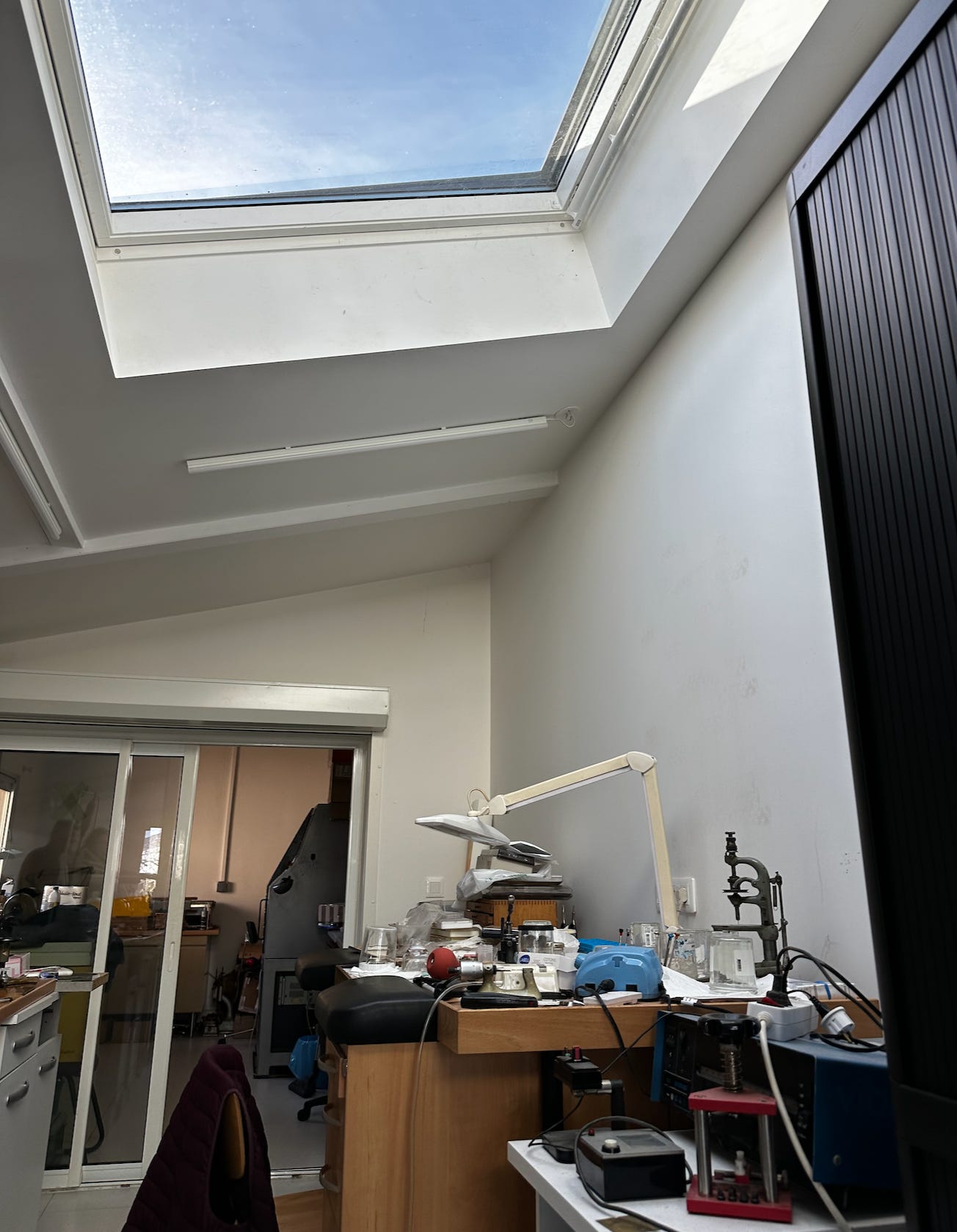


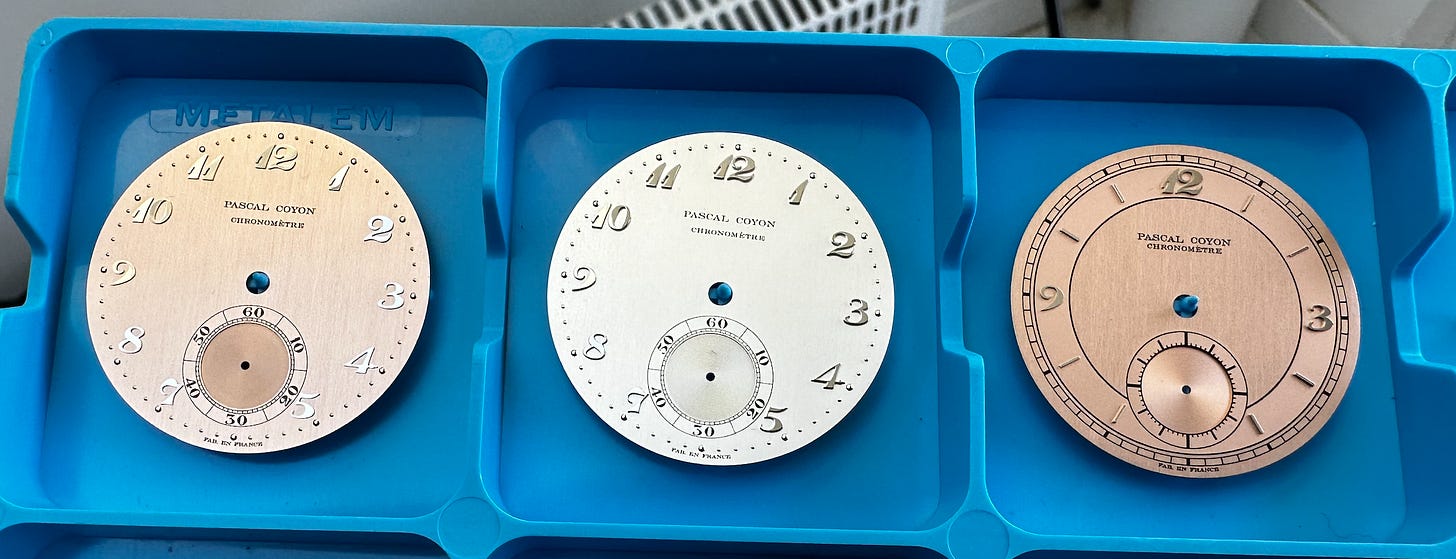
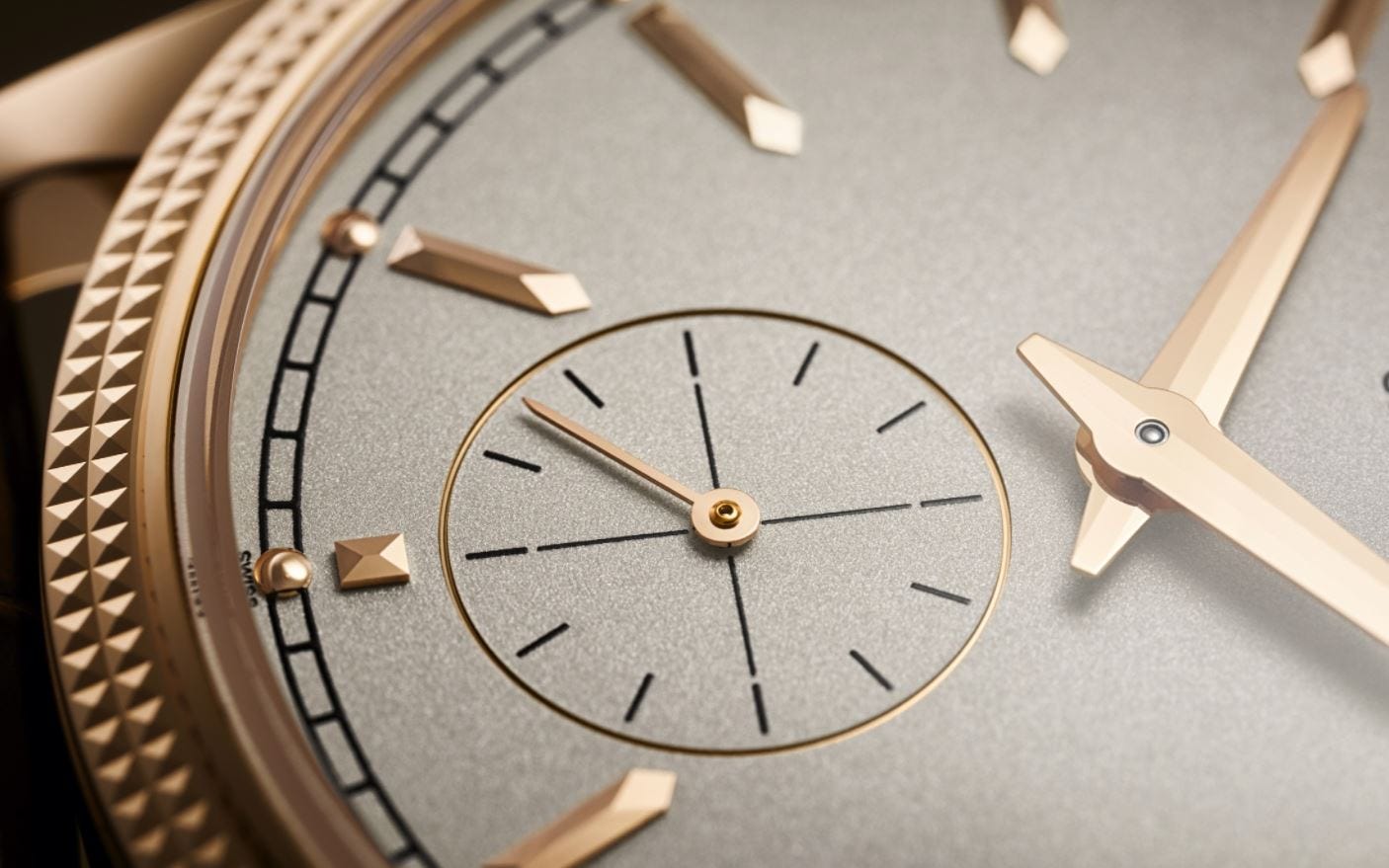





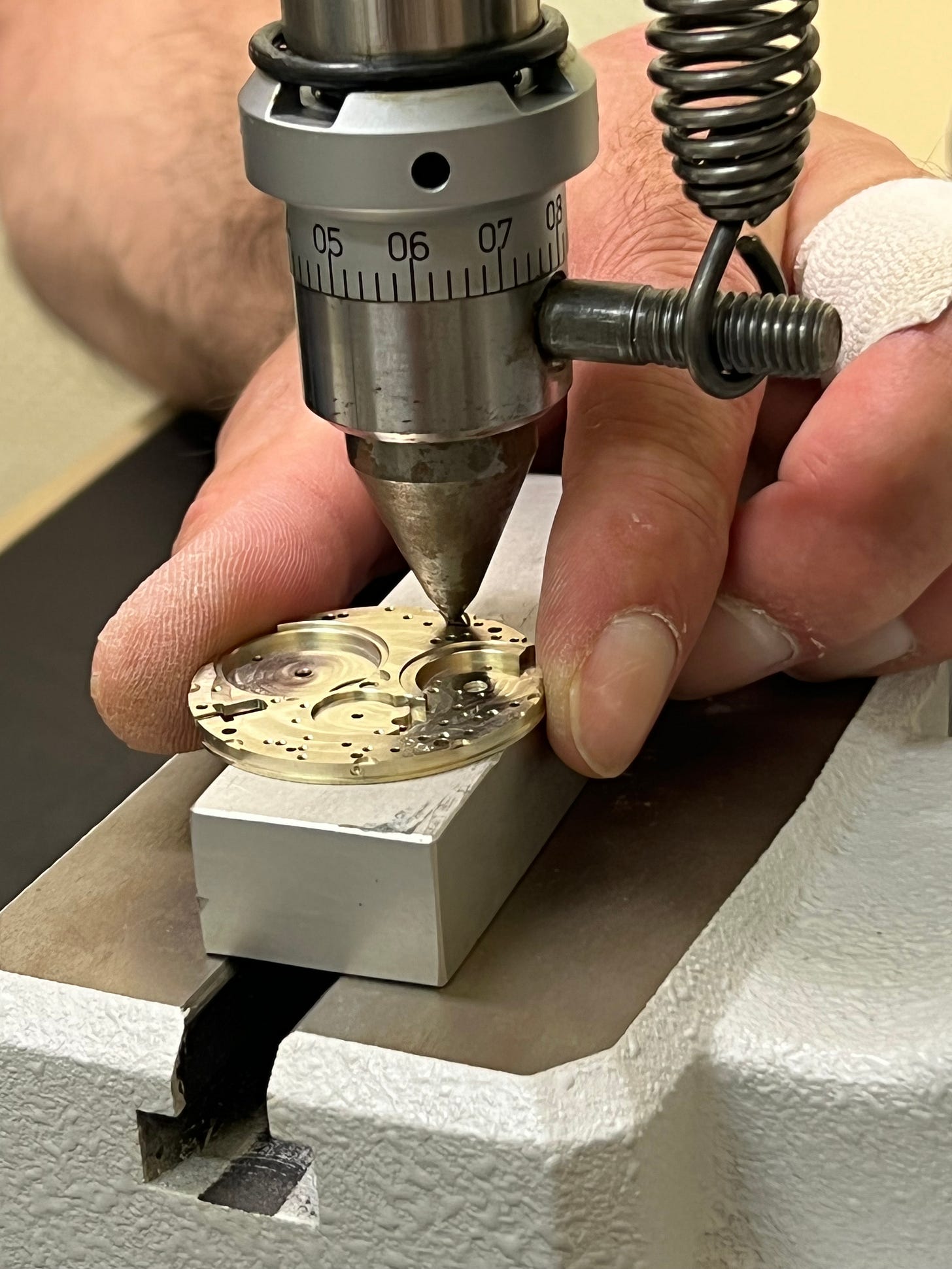
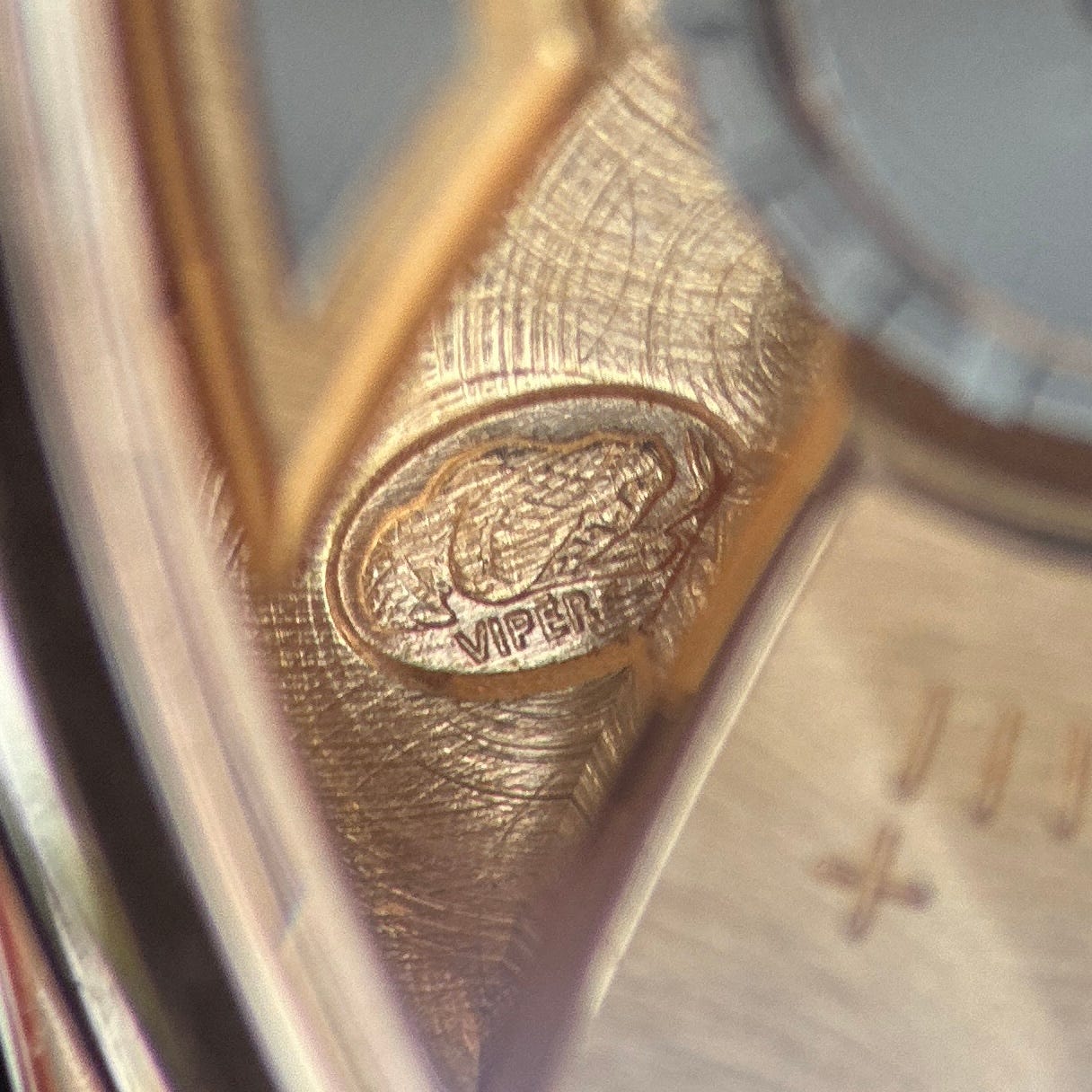




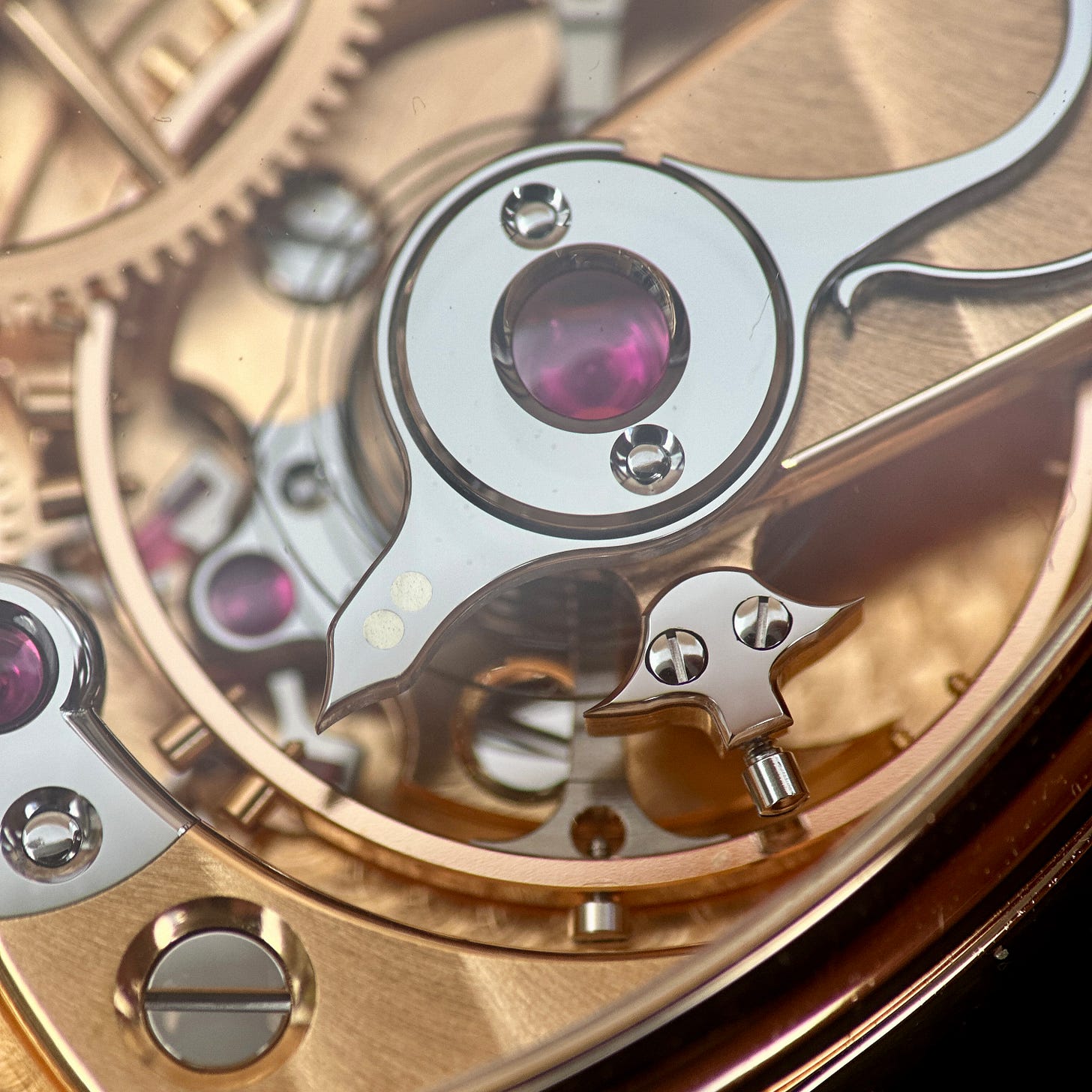
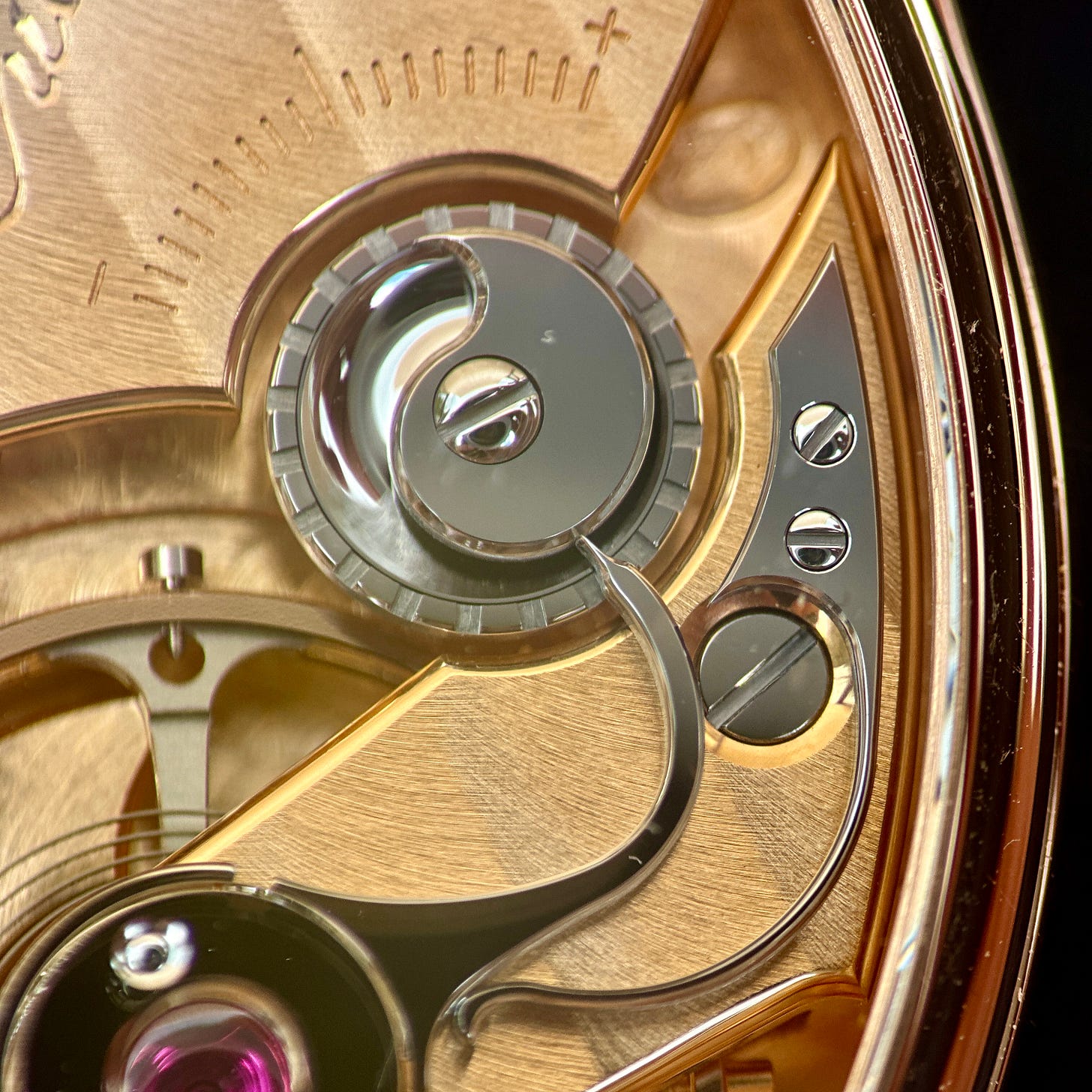







Thanks for sharing this story! That is one of the most beautiful watches I’ve ever seen!
Fabulous! So happy to finally see you post this, enjoyed it.